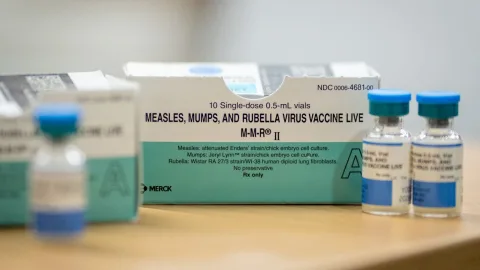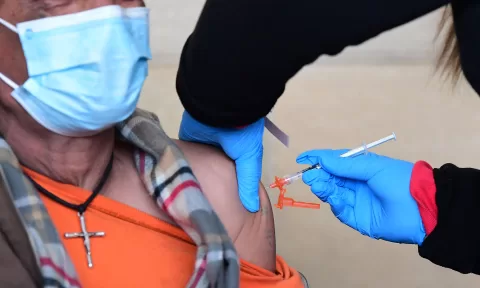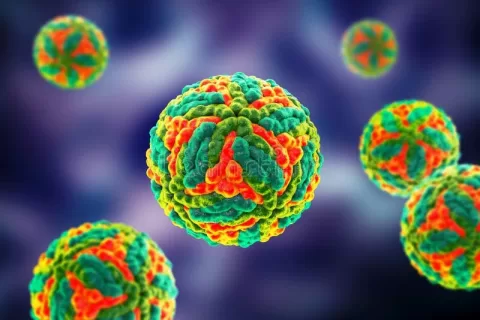The local spread of mosquito-borne diseases in Europe has become a pressing public health concern, as evidenced by the recent surge in chikungunya cases reported by the European Centre for Disease Prevention and Control (ECDC). France alone has documented 82 additional chikungunya cases this week, pushing its total to 383, while Italy has also seen its own spike with 60 more local cases. Additionally, the continent is grappling with a dengue outbreak, as France’s total has increased to 21 cases. Alarmingly, malaria in Greece has made its presence felt, with two probable local cases linked to recent migrant populations. The emergence of these diseases highlights the need for urgent attention and action in monitoring and controlling mosquito-borne diseases across Europe.
Europe is currently witnessing an unsettling increase in vector-transmitted illnesses, particularly those carried by mosquitoes. The alarming rise in local chikungunya infections, particularly in France and Italy, signals a shift in disease patterns that may reshape the continent’s health landscape. Concurrently, outbreaks of dengue fever have surged, and novel instances of malaria have been confirmed, especially in regions like Greece. These unfolding scenarios are exacerbated by the movement of populations, raising concerns about the importation of diseases and the potential for wider outbreaks. As the continent faces these vector-borne challenges, a comprehensive response is critical to safeguarding public health.
The Rising Threat of Mosquito-Borne Diseases in Europe
In recent months, Europe has witnessed a troubling increase in mosquito-borne diseases, highlighting public health concerns across the continent. The European Centre for Disease Prevention and Control (ECDC) reported a spike in chikungunya cases, with France alone adding 82 new cases this week, bringing the total to 383. This alarming trend is mirrored in Italy, which has also reported a substantial number of locally acquired chikungunya infections, currently totaling 167 cases. With warmer temperatures and changing climate patterns, the conditions for mosquito proliferation are becoming increasingly favorable, suggesting that these diseases may become more endemic in parts of Europe.
Additionally, the continent has also seen recent cases of dengue, albeit on a smaller scale, with France confirming 21 total cases this week. The emergence of these mosquito-borne infections underscores the need for increased surveillance and prevention efforts. Health authorities across Europe must ramp up educational campaigns about mosquito-borne diseases, aiming to inform the public about risk factors and the importance of protective measures, especially during peak seasons.
Understanding Dengue and Chikungunya: Symptoms and Risks
Dengue and chikungunya are two significant mosquito-borne illnesses posing serious health risks to sufferers. Dengue is characterized by high fever, severe headaches, pain behind the eyes, joint and muscle pain, and rash, making it a debilitating condition. Similarly, chikungunya presents similar symptoms but can lead to prolonged joint pain and discomfort post-infection. The simultaneous surge in these diseases in countries like France and Italy demonstrates the pressing need for clinicians and public health officials to be vigilant and prepared for outbreaks.
Understanding the clinical presentations and potential complications associated with dengue and chikungunya can aid in diagnosis and treatment. In areas where mosquito-borne diseases are on the rise, individuals should be encouraged to seek medical attention promptly if symptoms arise. Awareness and education on how to prevent mosquito bites, such as using repellents and installing screens in homes, are crucial to mitigate the impact of these diseases.
Malaria Incidences in Greece: Emerging Local Cases
Greece has reported alarming new cases of Plasmodium falciparum malaria, underscoring the resurgence of this disease in Europe. The confirmation of two probable local cases in a rural village exposes the vulnerabilities within the migrant population, as both individuals are linked epidemiologically and are suspected to have contracted malaria locally. This set of developments is striking, given that malaria has largely been eradicated from much of Europe, and its re-emergence serves as a warning sign.
Moreover, a third case involving a migrant from North Africa further highlights the complexities of migrant health and disease transmission. The individual arrived in Greece in June and began showing symptoms by late July. This case illustrates the importance of thorough health screenings and preventative measures designed for migrant populations, reinforcing the necessity for effective health policies that monitor and respond to the possible resurgence of malaria and other diseases previously deemed under control.
Global Impact of Polio Cases: A Renewed Focus on Vaccination
In light of recent polio cases reported in Chad, Nigeria, and Somalia, the global health community must place a renewed emphasis on vaccination initiatives. The Global Polio Eradication Initiative (GPEI) highlights the ongoing challenges posed by vaccine-derived types of the virus. Chad, for instance, has reported multiple cases, raising alarm bells over the potential for resurgence in polio infections. Vaccination remains one of the most effective tools in combating these outbreaks.
These developments illustrate critical gaps in immunization coverage that must be addressed to prevent polio from establishing itself again. Public health campaigns focusing on vaccination uptake must be enhanced, particularly in areas known to have low vaccination rates or where there is civil unrest that may impede immunization efforts. The recent outbreaks serve as a powerful reminder of the importance of adherence to vaccination schedules and the need for global commitment towards eradication.
Avian Flu H5N1: Surveillance and Public Health Response
The emergence of H5N1 avian influenza outbreaks adds another layer of concern for public health officials across the United States. Recent notifications from the USDA’s Animal and Plant Health Inspection Service indicate that outbreaks in poultry have intensified, particularly in South Dakota and Montana. These new cases exemplify the continuous need for rigorous surveillance and biosecurity measures to prevent the spread of this dangerous virus.
Public awareness regarding avian influenza is critical, especially in agricultural communities that are directly impacted by these outbreaks. Poultry farmers must be educated about the signs of infection in their flocks and the importance of reporting such instances promptly to health authorities. Additionally, consumers should be assured of the safety of poultry products, as cooking thoroughly can eliminate the virus, minimizing the risk of transmission to humans.
Long-term Implications of Climate Change on Disease Patterns
The rise in mosquito-borne diseases in Europe signals a potential shift in epidemiological patterns driven by climate change. Rising temperatures and altered precipitation patterns can extend breeding seasons for mosquitoes, increasing the likelihood of outbreaks. Health authorities must then adapt their strategies to include climate data when predicting and mitigating the impacts of mosquito-borne diseases like chikungunya and dengue.
Moreover, as climate change continues to affect weather patterns, experts predict that regions previously considered non-endemic for diseases such as malaria could become susceptible to local transmission. It is critical for public health policies to include climate adaptation strategies, ensuring that communities are equipped to cope with the evolving landscape of infectious diseases influenced by environmental changes.
The Importance of Integrated Disease Surveillance Systems
In response to the growing threat of infectious diseases in Europe, an integrated disease surveillance system is crucial. Such a system should encompass various diseases, including mosquito-borne threats like chikungunya and dengue, as well as other emerging health risks. By consolidating data across different pathogens, public health officials can better understand trends, allocate resources effectively, and respond swiftly to outbreaks.
Investment in technology and coordination between local and international health organizations is essential to bolster these surveillance systems. Timely reporting and data sharing can enable countries to identify potential outbreaks early, facilitating targeted interventions that can prevent widespread transmission of diseases. As the landscape of public health continues to evolve, strengthening these surveillance networks will be key to maintaining security against emerging infectious threats.
Public Health Messaging: Educating Communities on Prevention
Effective public health messaging plays a vital role in preventing the spread of mosquito-borne diseases. Communities must be informed about the symptoms of chikungunya and dengue, as well as preventive measures such as using mosquito nets, wearing protective clothing, and applying insect repellent. Interactive workshops and community outreach programs can empower individuals with the knowledge needed to safeguard their health and that of their families.
Moreover, collaboration with local organizations and healthcare providers can enhance outreach efforts. Tailored messaging that resonates with specific demographic groups, including migrant populations at higher risk of malaria and other diseases, is essential for effective prevention strategies. Continuous engagement with communities will foster a proactive approach to health, enabling swift action when new cases arise.
Future Directions in Disease Prevention and Management
The evolving landscape of infectious diseases necessitates innovative approaches to prevention and management. As mosquito-borne diseases become more prevalent in Europe, research into vaccines, effective treatments, and vector control strategies is increasingly important. Investment in scientific research can yield new solutions that not only address current outbreaks but also preemptively mitigate the risks of future epidemics.
Furthermore, health authorities should prioritize collaboration with international organizations that specialize in disease control. Sharing knowledge, resources, and strategies can enhance collective efforts to manage outbreaks effectively. As the global community faces interconnected health threats, a united front in research, prevention, and response is essential for safeguarding public health.
Frequently Asked Questions
What are the current chikungunya cases reported in Europe?
As per the latest update from the European Centre for Disease Prevention and Control (ECDC), France has reported a total of 383 chikungunya cases this week, including 82 new cases, while Italy has reported a total of 167 locally acquired chikungunya cases with an increase of 60 cases this week.
Is there a dengue outbreak in Europe?
Yes, the ECDC has reported an increase in dengue cases in France, with the total number of dengue cases reaching 21, including 2 new cases. However, Italy has not reported any new local dengue cases recently.
What is the situation regarding malaria in Greece?
Greece has confirmed two probable local cases of Plasmodium falciparum malaria, both linked to two migrants from a rural village in central Greece. Additionally, there is a third case involving a migrant from a non-endemic North African country.
Are there any recent reports of polio cases in European countries?
While Europe has currently not reported new polio cases, there have been updates from Chad, Nigeria, and Somalia regarding circulating vaccine-derived poliovirus cases. It highlights the importance of continued monitoring and vaccination efforts.
What impact does H5N1 avian flu have on mosquito-borne diseases in Europe?
H5N1 avian flu outbreaks can affect the larger ecosystem and public health landscape, potentially contributing to the environmental conditions that may favor the spread of mosquito-borne diseases like chikungunya and dengue in Europe.
| Country | Disease | Reported Cases | Notes |
|---|---|---|---|
| France | Chikungunya | 82 (Total: 383) | Increase in reported cases this week. |
Summary
Mosquito-borne diseases in Europe are on the rise, highlighting the urgent need for public health initiatives. In recent weeks, countries like France and Italy have reported significant increases in chikungunya cases, alongside new developments in malaria. With ongoing local transmission and new infections being documented, it is crucial for health authorities to reinforce surveillance and control measures to prevent further outbreaks.
The content provided on this blog (e.g., symptom descriptions, health tips, or general advice) is for informational purposes only and is not a substitute for professional medical advice, diagnosis, or treatment. Always seek the guidance of your physician or other qualified healthcare provider with any questions you may have regarding a medical condition. Never disregard professional medical advice or delay seeking it because of something you have read on this website. If you believe you may have a medical emergency, call your doctor or emergency services immediately. Reliance on any information provided by this blog is solely at your own risk.








